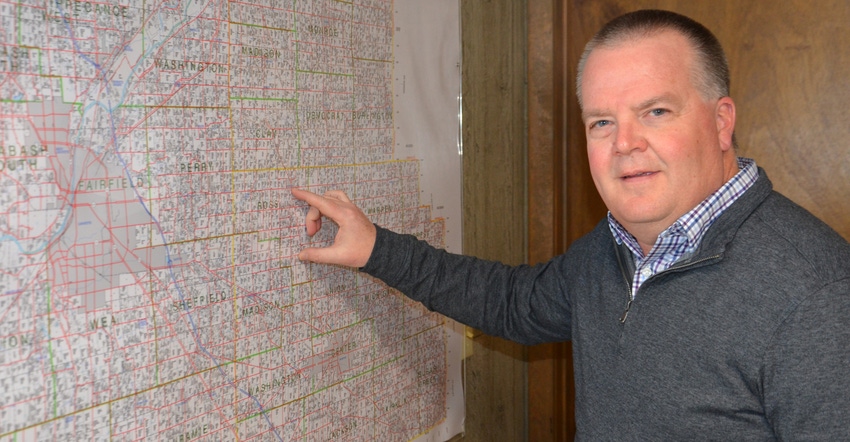
The Indiana 4R Nutrient Stewardship Certification Program kicked off in 2020. One retail dealership that volunteered to pilot certification was the Rossville CFS outlet, part of Kova Ag Products, Greensburg. It’s managed by Rod Miller.
This retail outlet received certification in 2020. “We’re audited by an independent third party hired to administer the program,” Miller explains. “The process doesn’t end with certification. Auditors visit annually and make sure we’ve corrected anything that needed correction.”
It may be as simple as instituting training for employees on some aspect of handling fertilizer when training wasn’t offered before. Any new practices are documented on paper, Miller says.
Part of the process of getting the Indiana 4R concept off the ground is explaining to farmers why it’s important, Miller says. It’s a work in progress. He believes it’s important for both his employees and farmers to understand why it’s best do things in a certain way. Usually, it’s because doing it that way provides better stewardship for the environment. Here are examples:
Avoid applying fertilizer on frozen ground. Too much product is at risk of washing away and winding up in streams if fertilizer or manure is applied on top of frozen ground, Miller explains. It’s not an approved practice in the 4R certification program.
Start with soil testing. If you’re not soil testing now, or if an Indiana certified crop adviser isn’t doing it for you as a soil and crop consultant, Miller says it’s a good place to start. He advises adopting a system where samples are pulled by soil type and/or grids on a regular basis.
Follow trusted fertilizer recommendations. Certification calls for agronomists and fertilizer dealers to base fertilizer recommendations on soil test results, using the Tri-State Fertilizer Recommendations. Those are prepared by three universities working together: Ohio State, Michigan State and Purdue. The Tri-State recs were updated recently. If you or your consultant prefers another system, the rates still must be comparable to Tri-State recs, Miller says. The goal is ensuring that too much product isn’t applied at one time.
Keep records of what you do. “Many people are already doing 80% of what the certification requires, but most aren’t writing it down or recording it anywhere,” Miller says. “Recording what we’re doing is important so we can prove to people who might be watching we’ve done things in the right way.”
Honor setbacks. If fertilizer isn’t supposed to be applied within so many feet of a sensitive area, it’s important to make sure that requirement is met during application, Miller explains. The same concept applies if someone is applying a pesticide. In that case, setbacks for different products are carefully spelled out on product labels. It’s important to follow setback limits, and document where products were and were not applied, Miller says.
Apply manure properly. Are you testing manure regularly for nutrient content and taking credit for nutrients in manure when fertilizer recommendations are made? Are you incorporating manure to cut down on runoff and nutrient losses?
“The 4R program promotes sound agronomic practices like these, which simply make sense in the long run,” Miller concludes.
About the Author(s)
You May Also Like




